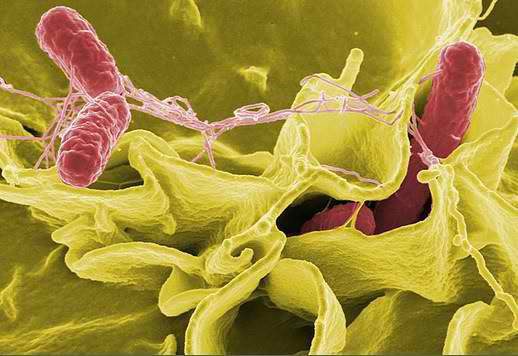
Approximately forty years ago, A. Adam discovered that in severe enteritis in infants, E. coli is sown from the feces, which differs from the normal one. The resulting strain of Escherichia coli, which causes loose stools, is called coli-dyspepsia.
Today it is known that there are a number of strains of Escherichia coli that have pathogenic properties, their designation depends on the type of antigen – “O” or “B”.
Colenteritis is an infectious disease caused by pathogenic Escherichia coli (E. coli). It manifests itself acutely – diarrhea often with blood or mucus, fever, abdominal pain. Depending on the pathogen, the disease can be complicated by hemolytic uremic syndrome (HUS) and thrombotic thrombocytopenic purpura (TTP).
Symptoms of colienteritis
Among all intestinal infections in infants, colienteritis is of the greatest importance, since it is severe and spreads rapidly in children’s groups. The severity of the symptoms of colienteritis depends on the age of the child: the disease is most severe in premature babies, newborns and in babies who are less than three months old, in this case the pathology most often causes the death of the child.
In children older than six months, the disease is mild, and in the second year of life, enteritis, caused by E. coli, practically does not occur. A severe course of the disease can be in a malnourished child in infancy, and not every baby infected with E. coli may develop enteritis. Data from regular studies have confirmed the assumption that healthy carriers of the infection can occur among children of any age.
The incubation period for colienteritis usually lasts from three to ten days. A sick child has all the manifestations of the disease characteristic of an intestinal infection, which are also found in other similar pathologies. Among the symptoms of colienteritis are lack of appetite, vomiting, frequent watery stools that have an ocher color and smell of semen. In some cases, mucus or streaks of blood appear in the feces.
The severity of the course of the disease directly depends on the age of the child. In premature infants and children of the first three months of life, symptoms of severe exsicosis, acidosis and toxicosis may appear in the first two days. Infection in babies up to six months due to frequent relapses can cause a serious eating disorder. With exhaustion, the infectious process causes an even greater loss of body weight and is often accompanied by decomposition phenomena.
In children of the second half of the year, severe pathologies that are accompanied by toxicosis can also occur, but in most cases the infectious process does not cause complications, although it is characterized by frequent loose stools, weakness, loss of appetite, and moderate exsicosis.
Making an accurate diagnosis is not complete without bacteriological examination of feces. It is of great importance both from an epidemiological point of view and for choosing the right treatment tactics. Sowing biological material on nutrient media allows you to determine the sensitivity of microorganisms to various antibiotics and allows the doctor to choose the optimal treatment.
Treatment of colienteritis
Treatment of colienteritis consists of diet therapy, the use of antibacterial drugs and replenishment of the water-salt balance.
At the initial stage, broad-spectrum antibiotics are used, which, in the presence of vomiting, are administered intramuscularly. After receiving the results of a bacteriological study, the treatment of colienteritis becomes more targeted.
The specific treatment is prescribed by the doctor after bacteriological examination.
[Video] Pediatrician of the highest category Eskova A.Yu. – Causes and symptoms of acute and chronic enterocolitis:









